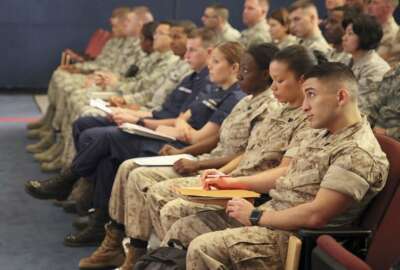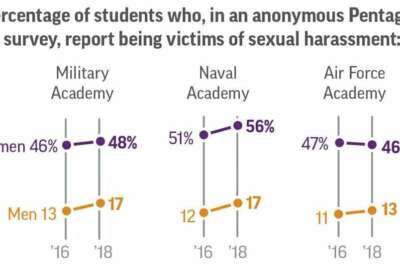
Joint officers may be getting the short straw with assignments before education
The military may be doing a disservice to joint officers by throwing them in the field before their education is finished.
Joint qualified officers are becoming more and more relevant as the military moves toward increased joint and multi-domain operations, but the way the Pentagon is educating these officers may not be in their best interest.
A new study from the RAND Corporation finds that joint education tends to happen when officers are available and not prior to a joint assignment. The educational fluidity has caused some paradoxical incidents where officers go on joint duty before receiving their full joint education.
The RAND study found cases where officers completed their first level of joint training, then went on a joint assignment and then came back and completed the second phase.
“In 2010, the Chairman of the Joint Chiefs of Staff came out and said the preferred order is that education precedes the joint duty assignment,” said Paul Mayberry, senior policy researcher at RAND. “That’s because the Joint Staff considers education a force multiplier.”
Mayberry said the backward way that these officers are being educated calls into question the quality and preparation needed in joint assignments for officers to be successful.
That can affect the career track of those officers by giving them less of an advantage in their assignments.
“For top talent personnel, there can be potential conflicts between gaining joint experiences and the services’ preferred career timelines for officers,” the study states. “Accordingly, we expect the services to carefully manage the point in the career at which an officer gains joint experience.”
However, that is not the case.
The study found 37% of joint combined warfighting school, 41% senior joint school and 65% senior service school graduates went on a joint assignment before finishing the second phase of their education.
Joint combined warfighting schools are the only options for receiving education during an assignment.
There is more to consider about with the joint qualified officer force, however.
The study found the inventory of officers increased from 2007 to 2014, but from 2015 to 2017 the numbers started to stabilized and even decline.
The RAND study does not make any judgements about whether that decline is good or bad, because the demand for the officers is not completely defined.
“These observed trends could be influenced by or the result of differential service deployments over the last decade and the challenges to fully develop individuals not only as leaders but in the full scope of their warfighting requirements,” the study states. “Based on the limited data available, we were not able to determine if such deployments were in fact a positive influence contributing to joint qualified officers or a hindrance given the time associated with operations that were not strategically oriented toward joint matters.”
DoD does have a list of the combatant commanders’ and defense secretary’s requirements on an annual basis.
Mayberry said DoD should actively review that list to ensure the priorities are being met.
“There is always this dynamic tension between the military services who are having to provide qualified and high quality officers to meet joint requirements and service requirements,” Mayberry said. “There will always be this natural tension between the services and the joint world.”
Accessing officer production isn’t the only recommendation Mayberry and his team made. The study suggests specifying needed joint educational outcomes and expectations.
“Explicit consideration should be made of (1) capabilities needed by joint educational graduates — given that there are multiple senior educational institutions that confer joint education and that these programs vary by duration and areas of emphasis and (2) performance requirements needed across joint assignments — incorporating feedback from senior joint leadership regarding educational prerequisites needed to successfully perform the duties of joint assignments,” the study states.
That recommendation ties back to the education before assignment issues.
Joint officers are a product of the 1986 Goldwater-Nichols Act, which began the transition from mostly independent military services to a more joint organization, the RAND study states.
Joint officers were created to increase the quality, stability, and experience of officers assigned to joint organizations—such as the Joint Staff or combatant commands—which, in turn, would improve joint outcomes.
Copyright © 2024 Federal News Network. All rights reserved. This website is not intended for users located within the European Economic Area.
Scott Maucione is a defense reporter for Federal News Network and reports on human capital, workforce and the Defense Department at-large.
Follow @smaucioneWFED






